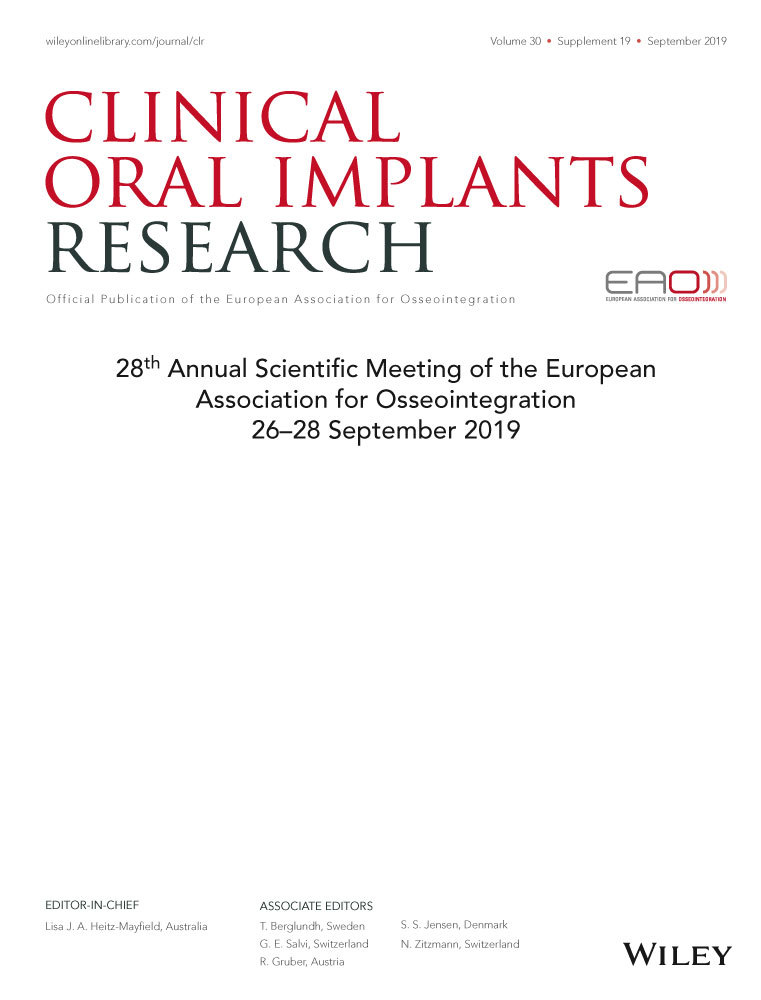The use of a non-perforated titanium plate customized on a stereolithographic model in a three dimensional GBR procedure
15754 Poster Display Clinical Research – Surgery
Background
GBR procedures in the lower jaw represent a challenge for oral surgeons around the world.
Aim/Hypothesis
The aim was to evaluate the efficiency of a non-perforated titanium plate for GBR in the lower jaw.
Material and Methods
a CBCT scan was made to obtain a stereolithographic model of the jaw. The titanium plate (Regenplate, Italy) was shaped on the model in order to fit the mandible. After preparing the recipient site and checking the fit, the plate was filled with a graft composed by 50% autologous bone and 50% Bovine derived xenograft (Bio-Oss+ Geistlich, Switzerland) and then positioned through the means of titanium screws. Flap release was performed and horizontal mattress suture were made. after 9 months the plate was removed and 3 implants were placed. After other 5 months the final prosthesis were delivered.
Results
No exposure occurred during the healing period. At removal, ridge augmentation resulted in 2.5 mm vertically and 3.4 mm horizontally. The gain was measured both on CBCT and clinically.
Conclusion and Clinical Implications
Shaping the titanium plate on the model reduced the operative time and the number of fixing screws. The absence of holes in the titanium membrane did not compromised the results of the regeneration. Moreover, it permitted an easier removal of the plate compared to a perforated MESH. More studies are needed to standardise the results.




